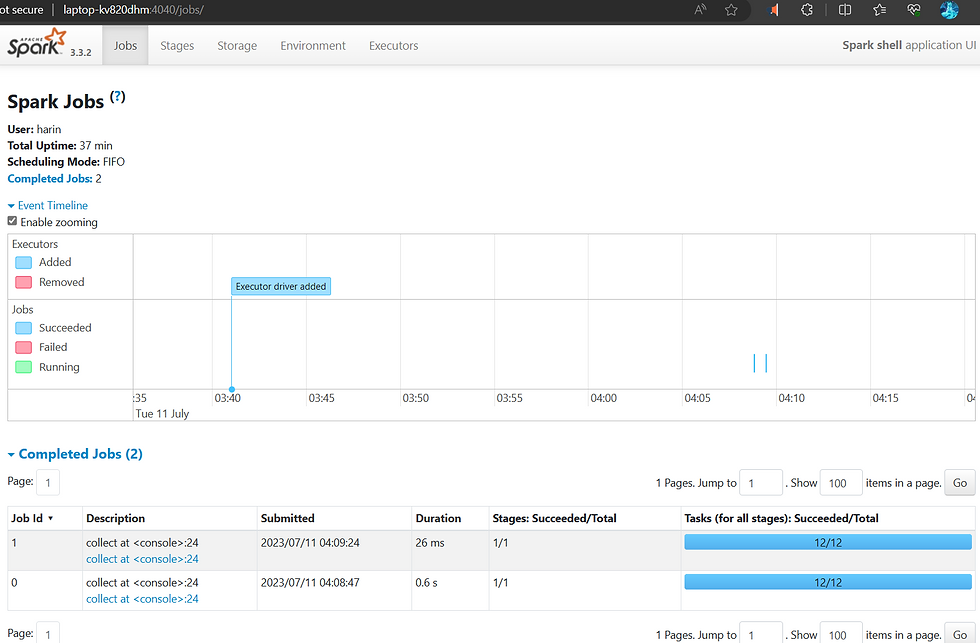Spark's RDD (Resilient Distributed Dataset): An Introduction
- Harini Mallawaarachchi
- Jul 11, 2023
- 3 min read
Apache Spark, a widely used distributed computing framework, provides a powerful abstraction called RDD (Resilient Distributed Dataset) for processing and manipulating large-scale data sets. In this blog post, we will delve into the concept of RDD, its characteristics, and explore some code examples to showcase its capabilities.
Introduction to RDD
RDD, short for Resilient Distributed Dataset, is a fundamental data structure in Apache Spark. It represents an immutable distributed collection of objects that can be processed in parallel across a cluster of machines. RDDs offer fault-tolerance and can be rebuilt in the event of a node failure, ensuring the reliability of distributed computations.
Creating an RDD
Let's start by looking at how to create an RDD in Spark. There are multiple ways to create an RDD, but we'll focus on two common approaches:
parallelizing an existing collection.
loading data from an external source.
Parallelizing an Existing Collection
One way to create an RDD is by parallelizing an existing collection. In this example, we'll parallelize an array of integers:
val data = Array(1, 2, 3, 4, 5)
val rdd = sparkContext.parallelize(data)In the code snippet above, we first define an array of integers called data. Then, using the parallelize() method of the sparkContext object, we convert the array into an RDD called rdd. The RDD will be partitioned and distributed across the nodes of the Spark cluster.
Loading Data from an External Source
Another common approach is to load data from an external source, such as a file. Spark provides methods to read data from various file formats, databases, and distributed storage systems. Here's an example of reading a text file and creating an RDD from its contents:
val rdd = sparkContext.textFile("file:///path/to/textfile.txt")In this code, the textFile() method is used to read the text file located at the specified path. The resulting RDD, rdd, will contain each line of the file as a separate element.
Transforming RDDs
One of the key features of RDDs is their ability to undergo transformations, resulting in new RDDs. Spark offers a rich set of transformation operations that can be applied to RDDs, such as map(), filter(), flatMap(), and more. These transformations allow us to manipulate the data and prepare it for further processing.
Example: Mapping RDD Elements
Let's demonstrate a simple transformation using the map() operation. Consider an RDD containing a collection of integers, and we want to multiply each element by 2:
val rdd = sparkContext.parallelize(Array(1, 2, 3, 4, 5))
val multipliedRDD = rdd.map(x => x * 2)In the code snippet above, we create an RDD called rdd from an array of integers. Then, we apply the map() transformation to rdd, passing a lambda function that multiplies each element by 2. The resulting RDD, multipliedRDD, will contain the transformed elements.
Actions on RDDs
In addition to transformations, RDDs support actions, which trigger computations on the RDD and produce results or side effects. Actions are the operations that initiate the processing and retrieval of data from RDDs.
Example: Counting Elements
One of the simplest actions is count(), which returns the number of elements in an RDD. Let's see an example:
val rdd = sparkContext.parallelize(Array(1, 2, 3, 4, 5))
val count = rdd.count()In this code, we create an RDD called rdd from an array of integers. Then, we apply the count() action to rdd, which returns the total count of elements. The result is stored in the variable count.
Conclusion
RDDs, or Resilient Distributed Datasets, are a fundamental abstraction in Apache Spark for distributed data processing. They provide fault-tolerant, parallelized data structures that allow for efficient and scalable computations. In this blog post, we explored the creation of RDDs from existing collections and external data sources. We also covered transformations and actions, which enable data manipulation and retrieval from RDDs. With the power of RDDs, Spark enables developers to perform complex data processing tasks on large-scale datasets with ease.



Comments